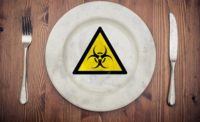Food-safety issues like the sanitary design of equipment, up-to-date operational procedures to prevent pathogens and cross-contamination of allergens, skilled training of employees and more continue to rise to the forefront of snack and bakery company consciousness. Many companies continue to work toward compliance with directives outlined in the Food Safety Modernization Act (FSMA), with the scope of that work varying from minor procedural tweaks to major shifts in the standard operating procedures.
In order to dig further into some of these issues, we reached out to Jesse Leal, quality manager, food safety services training, AIB International, Manhattan, KS, a supporter and sponsor of the Sanitary Design Workshop taking place in Chicago, March 29–30.
Douglas J. Peckenpaugh: What is the mission of the Baking Industry Sanitation Standards Committee (BISSC)?
Jesse Leal: The mission is to ensure information on how to improve equipment quality by using sanitary equipment design is communicated and implemented throughout the baking industry. BISSC also strives to improve market position by providing improved sanitation sanitary design and efficient production equipment.
DJP: Why is the “BISSC Certified” label important?
JL: The BISSC label is important because it indicates the equipment has met established requirements that are understood and followed by the baking industry. This certification also meets basic criteria for baking equipment for general principles of design construction and cleaning for all baking equipment to minimize the potential for food safety concerns related to equipment design.
DJP: What did the 2015 update to the “American National Standard for Bakery Equipment—Sanitation Requirements” (ANSI Z50.2-2015) entail?
JL: The update addressed the following:
- Specific requirements for easier clean ability to eliminate pockets and harborage areas that could lead to allergen issues
- Coatings that will withstand cleaning operations and will not peel, flake, or separate
- Fasteners with magnetic properties
DJP: What are some of the most-important recent developments in bakery equipment manufacturing best practices that improve upon aspects of sanitary design?
JL: These include:
- Elimination of pockets
- Coatings to be FDA acceptable and food-grade
- Design changes for guards to eliminate pockets and accumulation points
DJP: What are a few of the top steps bakeries can take to prevent pathogens and cross-contamination of potential allergens?
JL: Bakeries can help prevent pathogens and cross-contamination of allergens through:
- Education and training by qualified individuals or subject matter experts
- Formula control
- Allergen identification
- Production controls
- Changeover cleaning
- Labeling
- Engineering
DJP: What are some of the programs that AIB International offers that help train bakery teams in sanitary design of equipment, as well as equipment maintenance and operational best practices?
JL: Verify your facility’s programs meet regulatory and customer requirements by examining on-floor food safety practices. Discover the best kept secrets from AIB's experienced professionals and start finding issues that often lurk beneath the surface. Learn how to inspect equipment to identify design flaws and discover improvements. (For more information, see “Food Safety / Sanitation / GMPs.”)
Learn how to troubleshoot major problem areas and make repairs that promote a food safe working environment. Both those new to maintenance engineering and seasoned veterans will gain insight into many critical disciplines in the field. (For more information, see “Maintenance Engineering.”)
All FDA-registered US food manufacturing facilities, as well as facilities located in foreign countries that export to the US, must update food safety and food defense programs to meet new requirements of the Food Safety Modernization Act (FSMA). Learn about the new regulatory focus on sanitation, microbial concerns and allergens. (For more information, see “FSMA: The Pathway to Compliance.”)





